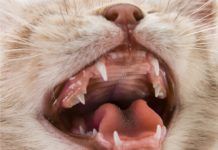Early Spay/Neutering 101
Habits change slowly. Therefore, many pet owners - and even many veterinarians - still wait longer than they should to get their cats spayed/neutered. A website that Dr. McCobb recommends is www.whentospay.org, run by the non-profit Humane Alliance. Some myth-dispelling facts include:At least 50 percent of litters are unplanned.Spaying/neutering helps eliminate annoying behaviors such as spraying, roaming, yowling and fighting, as well as heat cycles. (Female cats can go into heat up to 10 times a year.)
Early Spay/Neuter for Kittens
Chances are you already know the benefits of preventing cats from reproducing: It greatly helps to curb overpopulation, it can improve feline health, and it can also reduce or prevent unwanted behaviors. But is it safe for a young kitten to be spayed or neutered?
Understanding the Polydactyl Cat
Many cat lovers find them to be exceptionally endearing, but what is the story behind the extra toes? And does the polydactyl cat require any extra care?
Your Kittens Baby Teeth
In rare cases, kittens dont automatically lose their baby teeth and will require oral surgery. Here are the signs to look for and what treatment entails.
Mast Cell Tumors in Cats
Luckily, a diagnosis is usually not difficult and surgical removal is straight-forward. Here are the common signs that are associated with this cancer.
A Personal Experience in Administering IV Fluids for Cats
I wasnt particularly concerned when our veterinarian told me that it was time for us to start administering subcutaneous fluids to Sir Hubble Pinkerton, our 15-year-old white Oriental Shorthair. Many years ago, I had successfully treated a cat with chronic kidney disease with no problems at all. Because Sir Hubble is a very easy-going and cooperative cat, I assumed that it would be a piece of cake. My assumption was totally wrong.
Advice for the Feline Caregiver
It requires a special kind of devotion to care for a chronically ill pet. Here are expert tips to make some of the necessary tasks easier for both of you.
Is Your Cat Anorexic?
It's important to understand why the anorexia syndrome happens, the harmful effects it can have on your cat's health - and the common ways to stimulate appetite.
Dear Doctor – Cat With a Heart Murmur
My veterinarian told me that my cat has a heart murmur. Does this mean he will die prematurely from heart disease?
Dear Doctor – A readers complex question
My four-year-old cat, Stripe, has been diagnosed with an overactive immune system. Last year, he had surgery to remove a cranial lung lobe and the biopsy found the necrotic mass to be non-malignant. Chronic lymphoplasmacytic inflammation was the diagnosis.
The Discomfort of Feline Joint Disorders
A healthy cats impressive physical traits - her strength, agility and lightning-fast responses to external stimuli - are essentially attributable to the structure and versatility of her musculoskeletal system. However, the feline musculoskeletal system is also subject to a variety of disorders that can seriously compromise a cats comfort and agility, as well as the performance of necessary bodily functions. Unfortunately, such disorders often defy prompt recognition and treatment.
Understanding Anemia in Cats
Like every veterinarian, I evaluate the mouth and gums of my patient whenever I perform a physical examination. I expect to find nice pink gums, and most of the time, I do. Occasionally, Ill note with dismay that the gums are pale, or even white. This finding immediately sets off alarm bells in my head: This cat is anemic. The task of making a diagnosis now begins.













